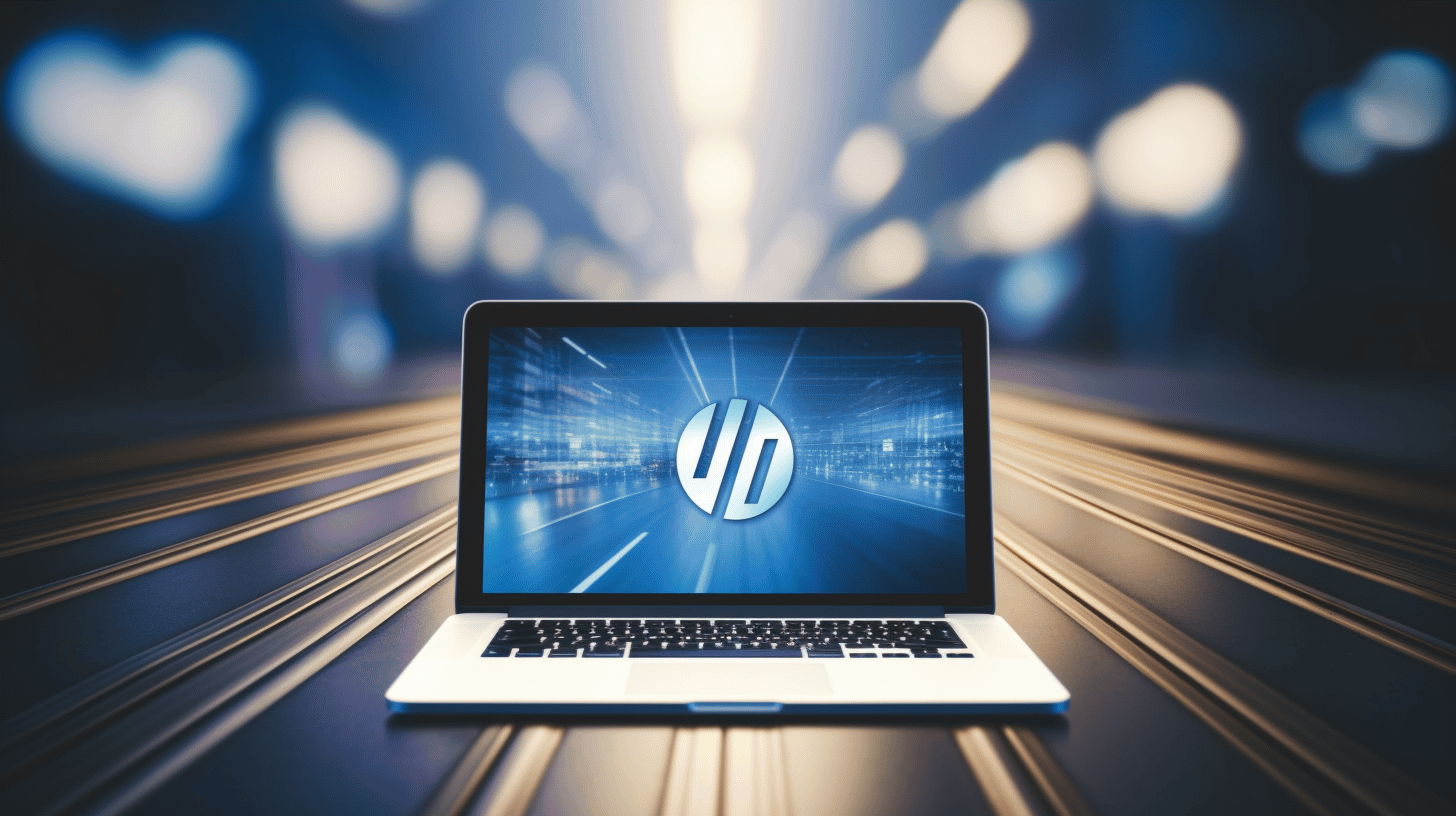在快节奏的数字世界中,人们的注意力越来越少,在线曝光度竞争也异常激烈,拥有一个高性能的网站至关重要。无论您是企业主、博主还是在线创业者,网站速度缓慢都会对您的成功产生不利影响。研究表明,即使页面加载时间延迟一秒钟也会导致转化率大幅下降。
那么,如何确保您的 WordPress 网站全速运转?答案在于优化技术,它可以增强您的网站并让您领先于其他网站。在本文中,我们将探讨优化 WordPress 网站并确保闪电般快速的加载速度所需采取的基本步骤。
但在深入探讨细节之前,让我们快速熟悉一下世界上最受欢迎的 CMS(内容管理系统)WordPress 的事实和数据。了解 WordPress 优化为何是您的在线策略中如此重要的一个方面非常重要。
凭借其易于使用的界面、可自定义的主题和庞大的插件库,WordPress 已成为世界上最受欢迎的内容管理系统 (CMS) 之一。让我们深入了解一些事实和数据,这些事实和数据突显了 WordPress 的影响力以及它多年来的发展历程。
WordPress 的流行
- WordPress 大约提供 所有网站的 43.1% 在互联网上。这一惊人的统计数据表明,网站所有者和开发人员都广泛采用并信任该平台。
- 平均而言,WordPress 开发人员的收入约为 每年 $60,000。该数字表明对能够利用 WordPress 的强大功能为个人和企业创建和维护网站的专业人士的需求。
市场中的 WordPress
- “WordPress” 获得了令人印象深刻的 每月全球搜索量达 240 万次如此高的搜索量反映了人们对探索和了解该平台的好奇心和兴趣。
- 当搜索与 WordPress 相关的主题时, 印度和美国 在搜索量最高的两个国家中名列前茅。这表明 WordPress 作为网站创建和管理的首选解决方案在全球范围内具有影响力和认可度。
预期增长
- 在 2023 年,WordPress 的使用人数 所有网站的 45.8% 在互联网上。采用率的快速增长表明该平台在 CMS 市场继续占据主导地位。
- 展望未来,WordPress 的未来一片光明。随着越来越多的个人和企业认识到使用 WordPress 建立和管理在线业务的好处,该平台有望进一步发展。
这些事实和数据描绘了一幅令人信服的 WordPress 影响力图景,并凸显了其作为领先 CMS 的地位。无论您是希望提高技能的开发人员、寻求用户友好型网站解决方案的企业主,还是只是对该平台感到好奇,了解有关 WordPress 的更多信息都可以为您打开一个充满机遇的世界。
要全面了解 WordPress 及其功能,请务必查看 WordPress101。对于初学者和爱好者来说,它都是宝贵的资源,为 WordPress 入门提供了深入的见解和实用技巧。🌟
在当今的数字时代,人们的注意力比以往任何时候都要短,拥有一个快速高效的网站对企业来说至关重要。用户希望网站能够快速加载,如果加载速度慢,他们很可能会放弃浏览网站,转而访问竞争对手的网站。事实上, 82% 的消费者声称页面速度慢直接影响他们的购买决定。 这意味着如果您的网站速度很慢,您可能会失去潜在客户和收入。
网页速度慢对消费者行为的影响
如果网站加载时间过长,可能会对用户体验和消费者行为产生负面影响。以下是页面速度慢影响用户行为的几种方式:
- 跳出率增加: 如果您的网站加载时间超过几秒钟,访问者很可能会离开并且永远不会回来。事实上, 如果网站加载时间超过 3 秒,57% 的访问者将离开。 这可能会导致失去参与、转化和销售的机会。
- 客户满意度下降: 网站加载缓慢会让用户感到沮丧,并导致整体体验不佳。用户可能会变得不耐烦,对您的品牌失去信任,并认为您的网站不专业或不可靠。这不仅会影响他们当前的互动,还会影响他们未来与您的企业互动的决定。
- 对搜索排名的负面影响: 搜索引擎(例如 Google)将页面速度视为排名因素。加载速度缓慢的网站可能会获得较低的自然搜索排名,从而使潜在客户更难找到您的网站。
网站加载时间和网站访问者
网站加载时间和网站访问者之间的关系是不可否认的。网站加载速度越快,用户体验越好,将访问者转化为客户的机会就越大。请考虑以下统计数据:
- 加载时间在 2 秒内的网站平均跳出率为 9%,而加载时间在 5 秒内的网站平均跳出率为 38%。
- 即使页面响应延迟 1 秒,也会导致转换率降低 7%。
- 另一方面,快速加载的网站可以对转化率、客户满意度和整体用户体验产生积极影响。事实上, 47% 的消费者希望网页加载时间在 2 秒或更短。
鉴于网站速度对消费者行为和企业整体成功的影响,投资于速度优化至关重要。优化网站性能可以提高用户参与度、增加转化率并在数字市场中占据竞争优势。
要了解有关速度优化对业务成功的重要性的更多信息,请查看此文章 托管-WP.com.
在当今的数字环境中,拥有一个快速且优化的网站对于提供积极的用户体验至关重要。网站优化的一个重要方面是图像优化。通过优化 WordPress 网站上的图像,您可以显著缩短页面加载时间并提高网站的整体性能。
为什么图像优化很重要?
图片在吸引网站访问者和与访问者进行视觉交流方面起着至关重要的作用。但是,如果优化不当,它们也会减慢网站速度并对其性能产生负面影响。以下是图像优化至关重要的几个原因:
- 更快的页面加载时间:优化后的图片尺寸更小,这意味着加载时间更短。这可以加快页面加载速度,为访问者带来更好的体验。
- 改进 SEO:Google 将页面加载速度视为其排名因素之一。通过优化图片,您可以提高网站的 SEO 性能,并增加在搜索引擎结果中排名更高的机会。
- 更好的用户体验:加载缓慢的网站会让用户感到沮丧,并导致更高的跳出率。通过优化图片,您可以为访问者创造更流畅、更愉快的浏览体验。
如何在 WordPress 中优化图像
值得庆幸的是,优化 WordPress 中的图像并不一定是一项复杂的任务。以下是一些优化图像并提高网站性能的有效技巧:
- 选择正确的文件格式:保存用于网络的图片时,请考虑使用适当的文件格式。JPEG 是照片的理想选择,而 PNG 则适用于插图和图形。避免使用高分辨率图像格式(如 TIFF 或 BMP),因为它们的尺寸往往较大。
- 调整图像大小:在将图片上传到 WordPress 网站之前,请确保图片大小已调整到合适的大小。使用照片编辑软件或在线工具将图片调整到网站所需的尺寸。这可以减小文件大小并有助于缩短页面加载时间。
- 压缩图像:图像压缩是一种在不显著影响图像质量的情况下减小文件大小的技术。Smush 和 EWWW Image Optimizer 等 WordPress 插件可以在上传时自动压缩图像,使整个过程变得无缝。
- 延迟加载:延迟加载是一种延迟加载图像直到它们在用户视口中可见的技术。这可以大大缩短页面加载时间,尤其是对于包含大量图像或长滚动页面的网站。Lazy Load 和 BJ Lazy Load 等 WordPress 插件使实现此技术变得轻而易举。
将图像优化纳入你的 WordPress 网站
为了提高 WordPress 网站的性能,必须优先考虑图像优化。通过遵循上述技术,您可以减少网站的加载时间,并为访问者提供更流畅的浏览体验。请记住,快速且高效优化的网站不仅方便用户使用,而且还有助于提高您的搜索引擎排名。
通过进行图像优化,您可以将您的 WordPress 网站提升到一个新的水平,并为您的受众提供引人入胜、视觉上吸引人的体验。
要了解有关优化 WordPress 网站加载速度的更多信息,请查看此综合指南 WordPress 加载速度优化.
在当今快节奏的数字世界中,网站速度在吸引和留住访客方面起着至关重要的作用。加载缓慢的网站可能会导致用户感到沮丧,并最终导致用户流失。作为 WordPress 网站所有者,您可以通过选择可靠的托管服务提供商并实施有效的缓存技术来提高网站的速度和性能。
为什么可靠的托管服务提供商很重要?
托管服务提供商本质上是您网站的基础。它负责存储您网站的文件、数据库,并在访问者访问您的网站时向他们提供内容。选择可靠的托管服务提供商至关重要,原因如下:
- 服务器性能:可靠的托管服务提供商可确保您的网站托管在资源充足的强大服务器上。这意味着加载时间更快,访问者的用户体验更流畅。
- 正常运行时间保证:不可靠的托管服务提供商可能会频繁停机,这意味着用户可能无法访问您的网站。可靠的托管服务提供商将提供高正常运行时间保证,确保您的网站保持在线并可供访问者访问。
- 安全:信誉良好的托管服务提供商将采取强大的安全措施来保护您的网站免受恶意攻击和黑客攻击。这有助于确保您的数据安全并让您的网站顺利运行。
- 技术支援:可靠的托管服务提供商通常会提供出色的技术支持,确保您遇到的任何问题或疑虑都能得到及时解决。这对于解决网站性能问题或任何意外问题非常有用。
缓存技术如何提高网站速度?
缓存是一种存储网站页面、图片和其他资产的静态副本的技术。当访问者访问您的网站时,系统会提供缓存版本,无需动态生成页面。这可以显著减少网站加载所需的时间。以下是一些常用的缓存技术:
- 浏览器缓存:通过指示访问者的浏览器在本地存储某些文件(例如图像和样式表),您可以减少后续请求的需要,从而缩短后续访问的加载时间。
- 服务器端缓存:WP Rocket 或 W3 Total Cache 等插件可以生成动态 WordPress 页面的静态 HTML 版本。这些缓存版本可以提供给访问者,无需进行资源密集型数据库查询和 PHP 处理。
- 内容分发网络 (CDN):CDN 是位于世界各地不同地区的服务器网络。通过从这些分布式服务器存储和提供您网站的静态资产,CDN 可以缩短用户和内容之间的距离,从而缩短加载时间。
实施缓存技术以及选择可靠的托管服务提供商可以显著提高网站的速度和性能。用户会喜欢快速的加载时间,搜索引擎也会更青睐您的网站,从而有可能提高您的 SEO 排名。
请记住,网站速度不仅仅是一个技术问题;它直接影响用户体验,并最终影响您的底线。因此,请花时间选择可靠的托管服务提供商并探索缓存技术以优化您的 WordPress 网站的性能。
要了解有关可靠托管服务提供商的重要性的更多信息, 点击这里.
定期监控和优化 WordPress 网站的性能对于成功至关重要。加载缓慢的网站不仅会让访问者感到沮丧,还会损害您的搜索引擎排名。在当今快节奏的数字世界中,互联网用户对加载时间较长的网站没有耐心,他们很可能会放弃此类网站,转而选择速度更快的网站。
为了确保您的 WordPress 网站以最佳状态运行,您需要注意各种性能因素并进行必要的优化。以下是帮助您入门的便捷指南:
1. 测试网站速度
监控网站性能的第一步是评估其速度。有几种在线工具可以提供有关网站加载时间的详细见解,例如 Google PageSpeed Insights 和 GTmetrix。这些工具会分析您的网站并提供提高速度和性能的建议。
2.优化图像
图片通常是网站加载缓慢的主要原因之一。优化图片以减小文件大小而不影响质量至关重要。请考虑以下提示:
- 将图像上传到 WordPress 网站之前,请先调整其大小至所需尺寸。
- 使用 TinyPNG 或压缩 JPEG 和 PNG 等工具压缩您的图像以减小文件大小。
- 考虑使用延迟加载技术,仅当图像在屏幕上可见时才加载图像。
3.最小化并合并CSS和JS文件
大型且未优化的 CSS 和 JavaScript 文件会严重降低网站速度。缩小并合并这些文件有助于减少对服务器的请求数量并缩短加载时间。考虑使用 Autoptimize 等插件来自动化此过程并优化网站的性能。
4.利用缓存
缓存是一种存储网站静态版本的技术,可减少动态生成每个页面的需要。通过利用 WP Rocket 或 W3 Total Cache 等缓存插件,您可以显著缩短网站的加载时间。
5.定期更新WordPress和插件
WordPress 核心文件和插件的过时版本可能会导致安全漏洞和性能问题。务必及时更新 WordPress 和所有已安装的插件,以确保最佳性能和安全性。
请记住,持续监控和优化对于 WordPress 网站的长期成功至关重要。通过定期评估网站的性能并进行必要的调整,您可以保持访客的参与度和满意度,从而提高搜索引擎排名并增加转化率。
因此,立即开始监控和优化您的 WordPress 网站,享受快速高效的在线服务带来的好处。
有关改善网站性能的更多提示,请查看此内容 综合指南.
介绍:
在 SEO 领域,页面优化在提高网站可见性和排名方面起着至关重要的作用。虽然有各种技术可以增强页面 SEO,但使用 SEO 插件可以简化流程并提高效率。Yoast SEO 就是这样一个流行的插件。
Yoast SEO:强大的页面优化工具
Yoast SEO 是一款广泛使用的 WordPress 插件,它提供了一套全面的功能来增强您的页面优化工作。凭借其用户友好的界面和强大的功能,它已成为许多网站所有者和 SEO 专业人士的首选插件。
Yoast SEO 的主要功能
- 内容分析: Yoast SEO 会分析您的内容并提供建议以提高其可读性和 SEO 友好性。它会检查关键字使用、句子结构、段落长度等因素。
- 标题和元描述优化: 该插件允许您优化页面标题和元描述,确保它们富含关键词且对用户有吸引力。
- XML网站地图: Yoast SEO 生成 XML 站点地图,帮助搜索引擎了解您网站的结构,提高其可爬行性和索引能力。
- 规范 URL: 该插件可帮助您设置规范 URL,以避免重复内容问题并巩固搜索引擎排名信号。
- 内部链接建议: Yoast SEO 分析您的内容并建议相关的内部链接,帮助搜索引擎有效地发现和浏览您的网站。
- 可读性分析: 此功能通过检查句子长度、副标题分布和过渡词的使用等因素来评估内容的可读性,确保读者易于理解您的内容。
结论
使用 SEO 插件(例如 Yoast SEO)可以极大地改善 WordPress 网站的页面优化。凭借其一系列功能和用户友好的界面,它简化了针对搜索引擎优化网站的过程。无论您是初学者还是经验丰富的 SEO 专业人士,Yoast SEO 都可以成为您优化工具库中的宝贵工具。
因此,如果您希望提高网站的知名度和排名,请考虑将 Yoast SEO 纳入您的页面优化策略。这是一项投资,可以在增加自然流量和提高搜索引擎排名方面产生可观的回报。
阅读更多内容 页面 SEO 技术 以提高您网站的性能。
总之,优化您的 WordPress 网站对于提高其性能和用户体验至关重要。通过遵循本文概述的步骤,您可以增强您的网站并吸引更多访问者。请记住,网站速度在消费者行为中起着至关重要的作用,因此优先考虑图像优化和缓存等优化技术至关重要。
不要忘记选择可靠的托管服务提供商,例如 Managed-WP,这是一款优质的托管 WordPress 云托管平台。借助 Managed-WP,您可以简化基础架构,享受数字体验的自由,并获得专家全天候解决问题的帮助。利用他们的服务确保您的 WordPress 网站以最佳状态运行。
因此,请继续实施这些优化技术,将您的 WordPress 网站提升到新的高度。当您有能力让网站加载速度快如闪电时,不要满足于加载缓慢的网站。祝您优化愉快!
了解有关 Managed-WP 的更多信息 以及它们如何增强您的 WordPress 网站性能。
常见问题
- 为增强 WordPress 网站性能,有哪些基本的优化技术?
增强 WordPress 网站的一些基本优化技术包括:1. 缓存和最小化,2. 优化图像和媒体文件,3. 启用 gzip 压缩,4. 使用 CDN(内容分发网络),5. 实现延迟加载。
- 为什么缓存对于 WordPress 网站优化很重要?
缓存对于 WordPress 网站优化非常重要,因为它有助于存储网站的静态版本,减少服务器负载并缩短加载时间。它通过快速向访问者提供内容来提升整体用户体验。
- 什么是延迟加载以及它对 WordPress 网站有何好处?
延迟加载是一种允许您的网站仅在图像和其他媒体文件在访问者视口中可见时才加载它们的技术。它通过减少初始加载来缩短页面加载时间,并增强用户体验,因为访问者不必等待所有内容加载后再进行查看。
- CDN(内容分发网络)如何帮助优化 WordPress 网站?
CDN 可在全球多个服务器中存储静态资产(例如图片、脚本和 CSS 文件),从而帮助优化 WordPress 网站。这缩短了访问者与服务器之间的距离,从而加快了内容交付速度并提高了网站性能。
- 优化图像和媒体文件真的会对 WordPress 网站速度产生影响吗?
是的,优化图像和媒体文件可以显著提高 WordPress 网站的速度。通过压缩减小文件大小、将图像调整为适当尺寸以及使用响应式图像,您可以大大缩短页面加载时间并增强用户体验。



















